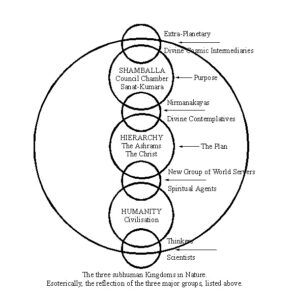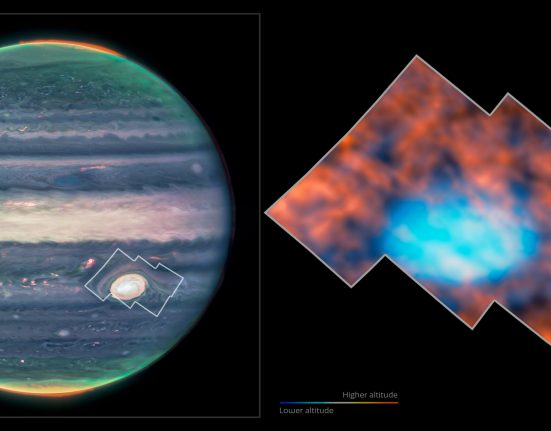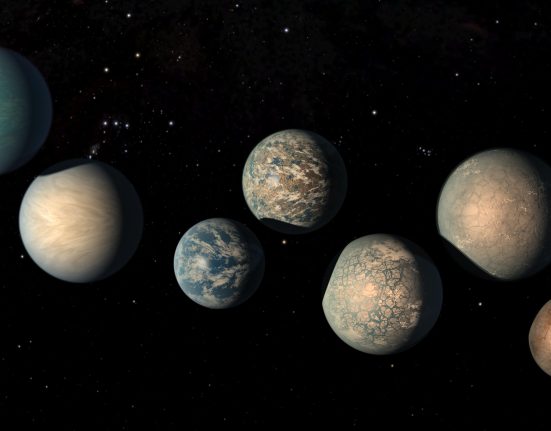It has been nine months since NASA's OSIRIS-REx probe brought samples from the asteroid Bennu to Earth. The samples are some of the earliest, pristine materials in the Solar System. They have reached the hands of scientists, and their work is revealing some surprises.
Some of the material found in the samples indicates that Bennu had a watery past.
NASA chose Bennu for the OSIRIS-REx sampling mission for several reasons. First, it is a near-Earth asteroid (NEA), so it is relatively close to Earth. It is also not very large, about 500 meters in diameter, and rotates slowly enough to allow a safe sampling procedure.
But the main reason was probably its composition. It is a B-type asteroid, a subtype of carbonaceous asteroids, which means… Contains organic molecules.. Finding organic molecules throughout the Solar System is one way to trace their origin and formation.
Returning samples to Earth is the best and most comprehensive way to study asteroids. Asteroid fragments that fall to Earth are scientifically valuable. But much of its lighter material simply burns up as it enters Earth's atmosphere, leaving, as we understand it, a huge crater.
Space missions always seem to surprise us in some way. If they didn't, there would be less impetus to send them. In this case, the sample contains chemicals that OSIRIS-REx didn't detect when it was studying Bennu.
“Bennu potentially could have been part of a wetter world.”
Dante Lauretta, principal investigator of the OSIRIS-REx mission
New research in the journal Meteoritics and Planetary Science presents these findings. It is titled “Asteroid (101955) Bennu in the laboratory: Properties of the sample collected by OSIRIS-REx.Co-lead author Dante S. Lauretta, principal investigator for the OSIRIS-REx mission and professor of planetary sciences at the University of Arizona's Lunar and Planetary Laboratory, is the author. The paper is an overview of the sample and serves as a catalog from which researchers can request sample material for their research.
“Finally having the opportunity to delve deeper into Bennu's OSIRIS-REx sample after all these years is incredibly exciting,” Lauretta said in a press release. “This advance not only answers long-standing questions about the early solar system, but also opens new avenues of research into the formation of Earth as a habitable planet. “The ideas outlined in our overview paper have sparked greater curiosity, driving our enthusiasm to explore deeper.”

“We describe the initial delivery and allocation of this asteroid sample and introduce its physical, chemical, and mineralogical properties from initial analyses,” the authors write in their paper. The 120-gram sample dates back billions of years. It is pristine, meaning it has not melted or resolidified since it was formed.
The Astromaterials Curation Team at NASA's Johnson Space Center used the Advanced Astromaterials Imaging and Visualization (AIVA) procedure to document the condition of the sample and the sampling equipment. This was done while the sample was still inside its glove box, which is highly reflective for this purpose. This is a meticulous process involving hundreds of stacked images.
Overall, the sample is dark, but there are brighter materials interspersed throughout. “Some stones appear mottled by brighter material that occurs as streaks and crusts,” the authors write. The largest piece is about 3.5 cm long, but much of it is dust. Stones with irregular morphologies have the lowest densities, and mottled stones have the highest densities.
“Some of the high-reflectance phases have a hexagonal crystalline habit, while others appear as clusters of small spheres, platelets, and dodecahedral shapes,” the authors write. The collection also contains some individual pieces that are very reflective.
In general, the material is grouped into three categories:
- Hummocky material with irregular surfaces. Its surfaces have rounded mounds and depressions reminiscent of cauliflower. This material is generally dark but has some brighter microscopic material.
- Angular particles that have fractured and have sharper edges. They have hexagonal and polygonal shapes and have some layers. They are generally dark, but some faces have a metallic sheen and specular highlights. They also have some highly reflective inclusions like hummocky material.
- Speckled particles that are mostly darker but have layers of reflective material. The reflective material fills small cracks in the darker material and also occurs as individual shiny flakes.

Representative samples were also analyzed at other US institutions using different instruments, including a plasma mass spectrometer, an infrared spectrometer, and an X-ray computed tomography machine. These examinations revealed other information, such as particle densities and elemental abundances. . In particular, it contains isotopic information for hydrogen, carbon, nitrogen and oxygen. He also compares these abundances with those of other asteroids.
But what stands out from this initial analysis is the sample. serpentine and other clay minerals. Its presence is similar to that found at the Earth's oceanic ridges, where the Earth's mantle comes into contact with water.

On Earth, contact between mantle material and ocean water also creates clays and other minerals such as carbonates, iron oxides, and iron sulfides. These were also found in the Bennu sample.
But one discovery stands out from the rest: water-soluble phosphates. These compounds are found throughout the Earth's biosphere and are an important component of biochemistry.
JAXA's Hayabusa 2 mission found a similar phosphate in its sample from the asteroid Ryugu. But Bennu's phosphate is different. Unlike any other asteroid sample, it has no inclusions and the grains are of different sizes. Magnesium sodium phosphate in the Bennu sample suggests a watery past.

“The presence and state of phosphates, along with other elements and compounds on Bennu, suggest a watery past for the asteroid,” Lauretta said. “Bennu could have been part of a wetter world, although this hypothesis requires further investigation.”
In their paper, the authors outline several hypotheses about Bennu's past. One of them states that “…the dominant lithologies on Bennu's surface have mineralogical, petrological, and compositional properties very similar to those of more aqueously altered carbonaceous chondrites.”
The Bennu sample also shows that the asteroid is chemically primitive, meaning it has remained largely unchanged since its formation. The rocks have not melted or solidified since their initial creation. The asteroid's elemental properties also reflect those of the Sun.
“The sample we returned is the largest deposit of unaltered asteroid material on Earth right now,” Lauretta said.

Initial research also shows that Bennu is rich in carbon and nitrogen, critical clues to the asteroid's origin. These chemicals also influence the emergence of life, which adds to the intrigue.
“These findings underscore the importance of collecting and studying material from asteroids like Bennu, especially low-density material that would normally burn up upon entering Earth's atmosphere,” Lauretta said. “This material holds the key to unraveling the intricate formation processes of the solar system and the prebiotic chemistry that could have contributed to the emergence of life on Earth.”
Harold Connolly is a co-author of the study and a mission sample scientist who leads the sample analysis team. He is also a professor at Rowan University in Glassboro, New Jersey, and a visiting research scientist at the University of Arizona. “The Bennu samples are tantalizingly beautiful extraterrestrial rocks,” Connolly said. “Every week, analysis by the OSIRIS-REx sample analysis team provides new and sometimes surprising findings that are helping to place important constraints on the origin and evolution of Earth-like planets.”
And this is really just the beginning. With these assessments in hand and the sample catalogued, research scientists around the world will request samples for their own research.
More secrets will be revealed.













Leave feedback about this